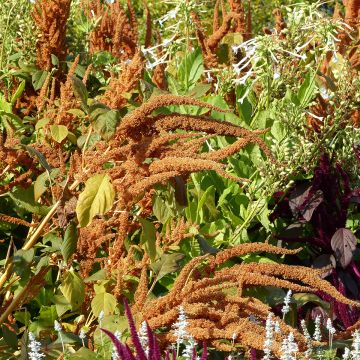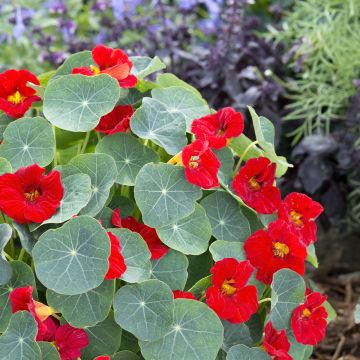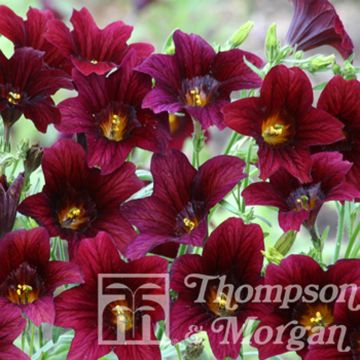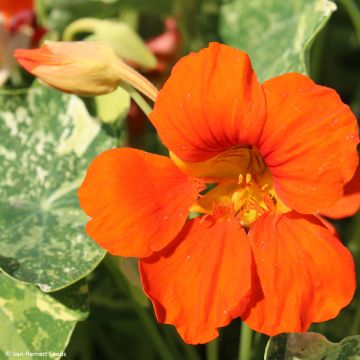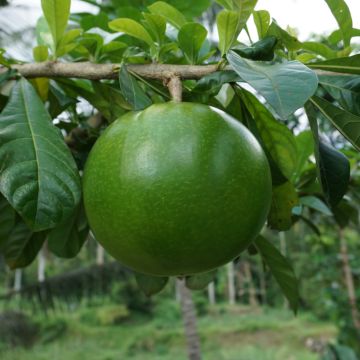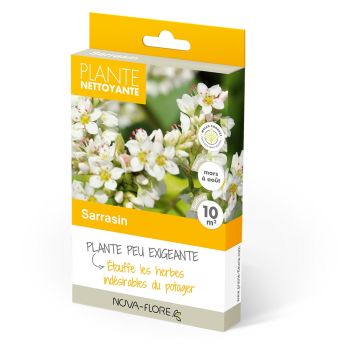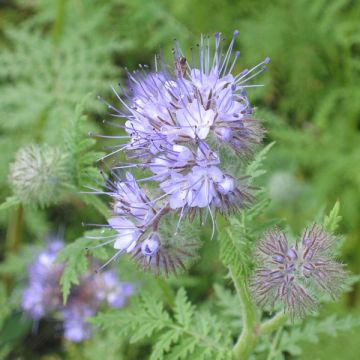Shipping country and language
Your country of residence may be:
Your country of residence is:
For a better user experience on our website, you can select:
Your shipping country:
Andorra
Austria
Belgium
Bulgaria
Canada
Chile
Croatia
Cyprus
Czechia
Denmark
Estonia
Finland
France
Germany
Greece
Hungary
Iceland
Ireland
Italy
Latvia
Lithuania
Luxembourg
Malta
Monaco
Netherlands
Poland
Portugal
Romania
Slovakia
Slovenia
Spain
Sweden
Switzerland
United Kingdom
We only deliver seed and bulb products to your country. If you add other products to your basket, they cannot be shipped.
Language:
French
German
Spanish
English
My Account
Hello
My wish lists
Plantfit
Log in / Register
Existing customer?
New customer?
Create an account to track your orders, access our customer service and, if you wish, make the most of our upcoming offers.


Helenium puberulum Autumn Lollipop Seeds
Helenium puberulum Autumn Lollipop Seeds
Helenium puberulum Autumn Lollipop
Sneezeweed, Helen's flower, Dogtooth daisy
Why not try an alternative variety in stock?
View all →Order in the next for dispatch today!
Dispatch by letter from €3.90.
Delivery charge from €5.90 Oversize package delivery charge from €6.90.
More information
This item is not available in your country.
Schedule delivery date,
and select date in basket
This plant carries a 6 months recovery warranty
More information
We guarantee the quality of our plants for a full growing cycle, and will replace at our expense any plant that fails to recover under normal climatic and planting conditions.
Seed-only orders are dispatched by sealed envelope. The delivery charge for seed-only orders is €3.90.
Does this plant fit my garden?
Set up your Plantfit profile →
Description
Helenium puberulum 'Autumn Lollipop' is a truly original variety. All summer long, unusual globe-shaped inflorescences appear on strong, silvery stems. They age from brown to bronze then yellow, resting on a small petticoat of golden yellow petals. This robust plant thrives in full sun, in average garden soil providing it is well-drained. Captivating in the foreground of flower beds and borders, excellent for cutting, Helenium is easy to sow and never disappoints.
Helenium puberulum or Sneezeweed is a unique, short-lived perennial (sometimes an annual) that is native to humid meadows and valleys of California. It belongs to the large Asteraceae family. The H. puberulum species is less well known than H. automnale. 'Autumn Lollipop' is a cultivar selected for its more compact habit and more colourful inflorescences. It forms erect clumps that grow to about 80 cm tall for a spread of 45 cm. The leaves are mainly located at the base of thin, winged, branched stems covered with fine hairs. The flowering period is from July to September and is very popular with butterflies and other foraging insects. Each plant can produce up to 30 flower heads in one season, each one measuring about 2 cm in diameter. Unlike other helenias which have cone-shaped centres, those on H. puberulum are globe-shaped, made up of tiny florets with colours which vary from brown to bronze and yellow. Underneath is a small collar of slightly ruffled golden yellow petals (ray flowers). Flowers are followed by seed heads called achenes, filled with seeds that are favoured by birds. They self-seed fairly easily in cool, light soil.
Helenium puberulum 'Autumn Lollipop' displays very attractive, original blooms which look lovely in cottage-style gardens and large herbaceous borders. It blends well with other simple flowers such as cosmos, love-in-a-mist, poppies, thistles, echinacea, perennial sage, as well as ornamental grasses (Stipa tenuifolia, Muhlenbergia capillaris...). It is an excellent cut flower for fresh or dried floral arrangements.
Flowering
Foliage
Plant habit
Botanical data
Helenium
puberulum
Autumn Lollipop
Asteraceae
Sneezeweed, Helen's flower, Dogtooth daisy
North America
Other Flower seeds A to Z
Planting and care
From February to June or in September-October:
Sow under cover, in pots or seed trays filled with good quality sowing. Cover the seeds with a very fine layer of compost. Make sure that the soil is moist but not waterlogged, and keep a temperature of 13-15°C. Place in a polythene bag or propagator in a light place. Germination generally takes 14-21 days. Once the young plants are strong enough to be handled, transplant them into bigger pots. Harden them off for 10 to 15 days before planting. When all risk of frost is over, plant them out in their final location, leaving 30 cm between each plant. When sowing early autumn, we recommend protecting the seedlings from hard frosts by growing them in a cold frame. They can be planted out the following spring.
Growing tips:
Plant Helenium puberulum in ordinary soil, providing it is fertile, moist and well-drained. Amend with potting mix and/or well-decomposed compost. Choose a very sunny spot. Water regularly after planting; once established, water only in the event of prolonged drought. This variety does not require staking. Cut the plant back (stems and leaves) near the ground once the stems have darkened. This variety sometimes behaves like an annual, depending on the climate.
Sowing period
Intended location
This item has not been reviewed yet - be the first to leave a review about it.
Flower seeds
Haven't found what you were looking for?
Hardiness is the lowest winter temperature a plant can endure without suffering serious damage or even dying. However, hardiness is affected by location (a sheltered area, such as a patio), protection (winter cover) and soil type (hardiness is improved by well-drained soil).

Photo Sharing Terms & Conditions
In order to encourage gardeners to interact and share their experiences, Promesse de fleurs offers various media enabling content to be uploaded onto its Site - in particular via the ‘Photo sharing’ module.
The User agrees to refrain from:
- Posting any content that is illegal, prejudicial, insulting, racist, inciteful to hatred, revisionist, contrary to public decency, that infringes on privacy or on the privacy rights of third parties, in particular the publicity rights of persons and goods, intellectual property rights, or the right to privacy.
- Submitting content on behalf of a third party;
- Impersonate the identity of a third party and/or publish any personal information about a third party;
In general, the User undertakes to refrain from any unethical behaviour.
All Content (in particular text, comments, files, images, photos, videos, creative works, etc.), which may be subject to property or intellectual property rights, image or other private rights, shall remain the property of the User, subject to the limited rights granted by the terms of the licence granted by Promesse de fleurs as stated below. Users are at liberty to publish or not to publish such Content on the Site, notably via the ‘Photo Sharing’ facility, and accept that this Content shall be made public and freely accessible, notably on the Internet.
Users further acknowledge, undertake to have ,and guarantee that they hold all necessary rights and permissions to publish such material on the Site, in particular with regard to the legislation in force pertaining to any privacy, property, intellectual property, image, or contractual rights, or rights of any other nature. By publishing such Content on the Site, Users acknowledge accepting full liability as publishers of the Content within the meaning of the law, and grant Promesse de fleurs, free of charge, an inclusive, worldwide licence for the said Content for the entire duration of its publication, including all reproduction, representation, up/downloading, displaying, performing, transmission, and storage rights.
Users also grant permission for their name to be linked to the Content and accept that this link may not always be made available.
By engaging in posting material, Users consent to their Content becoming automatically accessible on the Internet, in particular on other sites and/or blogs and/or web pages of the Promesse de fleurs site, including in particular social pages and the Promesse de fleurs catalogue.
Users may secure the removal of entrusted content free of charge by issuing a simple request via our contact form.
The flowering period indicated on our website applies to countries and regions located in USDA zone 8 (France, the United Kingdom, Ireland, the Netherlands, etc.)
It will vary according to where you live:
- In zones 9 to 10 (Italy, Spain, Greece, etc.), flowering will occur about 2 to 4 weeks earlier.
- In zones 6 to 7 (Germany, Poland, Slovenia, and lower mountainous regions), flowering will be delayed by 2 to 3 weeks.
- In zone 5 (Central Europe, Scandinavia), blooming will be delayed by 3 to 5 weeks.
In temperate climates, pruning of spring-flowering shrubs (forsythia, spireas, etc.) should be done just after flowering.
Pruning of summer-flowering shrubs (Indian Lilac, Perovskia, etc.) can be done in winter or spring.
In cold regions as well as with frost-sensitive plants, avoid pruning too early when severe frosts may still occur.
The planting period indicated on our website applies to countries and regions located in USDA zone 8 (France, United Kingdom, Ireland, Netherlands).
It will vary according to where you live:
- In Mediterranean zones (Marseille, Madrid, Milan, etc.), autumn and winter are the best planting periods.
- In continental zones (Strasbourg, Munich, Vienna, etc.), delay planting by 2 to 3 weeks in spring and bring it forward by 2 to 4 weeks in autumn.
- In mountainous regions (the Alps, Pyrenees, Carpathians, etc.), it is best to plant in late spring (May-June) or late summer (August-September).
The harvesting period indicated on our website applies to countries and regions in USDA zone 8 (France, England, Ireland, the Netherlands).
In colder areas (Scandinavia, Poland, Austria...) fruit and vegetable harvests are likely to be delayed by 3-4 weeks.
In warmer areas (Italy, Spain, Greece, etc.), harvesting will probably take place earlier, depending on weather conditions.
The sowing periods indicated on our website apply to countries and regions within USDA Zone 8 (France, UK, Ireland, Netherlands).
In colder areas (Scandinavia, Poland, Austria...), delay any outdoor sowing by 3-4 weeks, or sow under glass.
In warmer climes (Italy, Spain, Greece, etc.), bring outdoor sowing forward by a few weeks.
